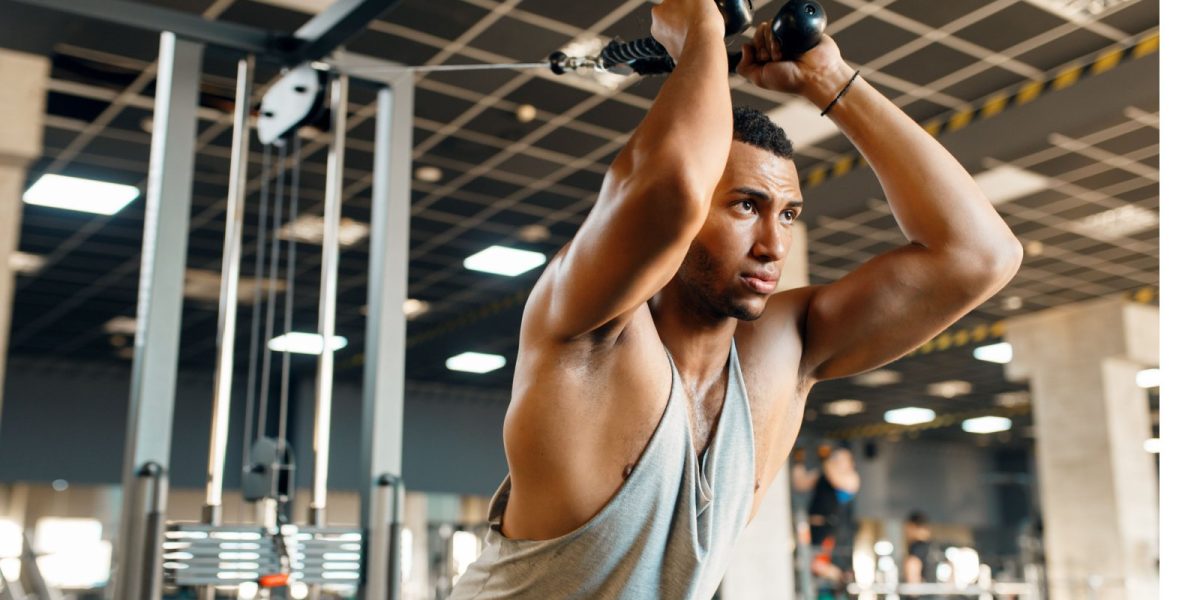Bodybuilding is a lifelong venture. Whether you’re in it for competition or just in it for the lifestyle (and the size), it will be a labor of love. As a beginner, you can see some progress with almost any program, but actually going far will take a bit more planning.
It’s easy to get distracted seeking rapid gains without noticing plateaus closing in all around you. Sometimes you don’t know what you don’t know until it’s too late, especially when you’re new to the gym. Luckily, you don’t have to wade into training blindly.
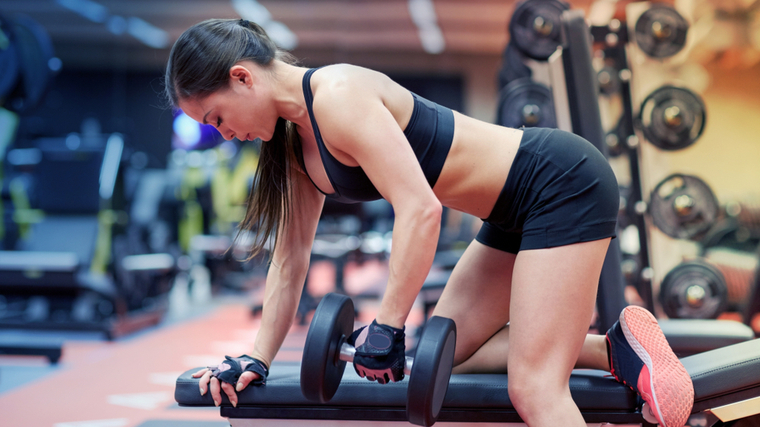
Try this bodybuilding routine — specifically designed for beginners looking to build mass. But it’s not just for packing on size, it can also future-proof your body by building a foundation for every routine to come.
Beginner Bodybuilding Routine
The Push/Pull/Legs Split
A push/pull/legs routine is one of the most common forms of splitting your training week, and for good reason. It focuses on synergistic movements (exercises that work overlapping muscles) that can build your physique extremely well as a beginner. From machines, calisthenics (bodyweight training), free weights, and cable work, you’ll catch a crazy pump and plenty of progress to show for it.
Push/pull/legs routines are often performed twice within the same week. Train each routine in order once before taking a rest day and starting the cycle again — three workouts, rest day, three workouts, rest day, repeat.
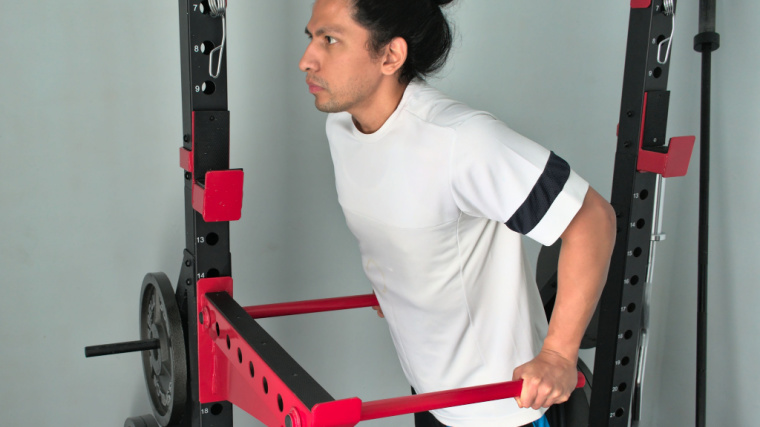
With this approach, each muscle group will have three to four days of rest while also being worked with a double-dose of training per week. However, don’t fret if your schedule only allows you to train each routine once a week. As long as your total weekly training (the number of hard sets) is consistent, you should see generally equal muscle gain regardless of whether you do it all in one day or choose to spread over two sessions. (1)
To get the most out of your early bodybuilding stages, think about using exercises that will help carry over into future routines. Look to build a foundation of strength, stability, and muscle by incorporating multi-joint exercises such as presses, hinges (deadlift variations), and squatting patterns.
These exercises will also help efficiently approach your core development by not having to specifically add in abdominal training during your beginner stages. As you progress through each day and get deeper into your programs, you can get more specific with isolation-type core training.
The Push Workout
A solid push routine will kick off your push/pull/legs split with a bang. Building up your presses, upper body stability, and finishing with some pump work will set you on a great path for continued progress. A good rule of thumb is to prioritize your biggest or hardest exercises, so line up your presses and calisthenics first. After that, drop into some more moderate weight and repetition work. Isolation-type training can round out your day and leave you walking away ready for your next routine in the split.
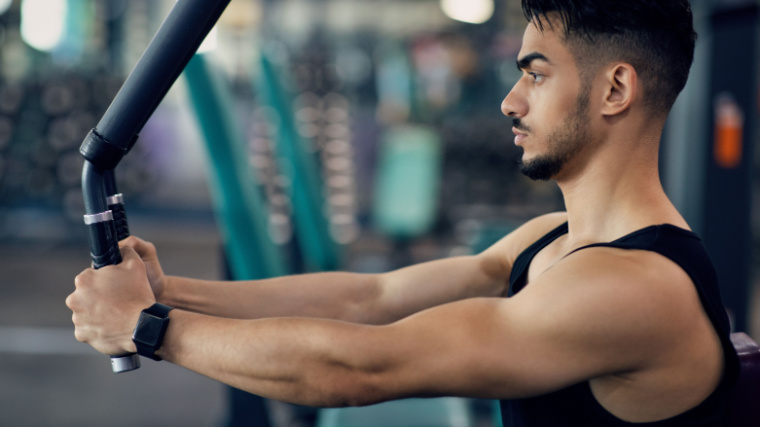
Regardless of the exercise or set and repetitions you perform, get each set as close to muscle failure as possible. When you do, most repetition ranges can help deliver an effective dose of muscle-growing stimulus. (2)
Machine Chest Press
- How to Do It: Take a seat on the chest press machine and tuck your shoulder blades together. Take a comfortable-width, palms-down grip on the pressing handles. Slowly lower the handles toward your body until you feel a light stretch across your chest. Press the handles back toward your starting position, stopping just shy of locking your elbows.
- Sets and Reps: 3 x 10-12
- Rest Time: Rest two minutes between sets.
Dip
- How to Do It: Support yourself on an assisted dip machine or parallel dip station by gripping the handles with your palms facing in toward your body. Extend your arms, which allows you to begin each rep from a strong locked out position. Brace your entire body and bend your arms to slowly lower yourself. Allow your torso to lean slightly forward with your elbows aimed at an angle. Once you feel a light stretch in your chest or shoulders, press through your palms and push back toward lockout.
- Sets and Reps: 3 x 10-12
- Rest Time: Rest two minutes between sets.
Machine Pec Flye
- How to Do It: Sit on the pec-deck machine with your entire back flat against the pad. Grab each handle with a slight bend in your elbows. Keep your arms “long” and nearly straight. Bring your palms together in front of your chest before returning to the stretched position.
- Sets and Reps: 3 x 12-15
- Rest Time: Rest 90 seconds between sets.
Cable Crossbody Triceps Extension
Cross Cable Tricep Extension – Under 60s How-to – Schaum Fitness
- How to Do It: Stand in the center of a dual pulley station with the pulleys set at the highest level. Grab the carabiners on each side with the opposite hand — your left hand grabs the right pulley and your right hand grabs the left pulley. Take a small step backward, tuck your shoulder blades back and down, and lean forward slightly with a stable body. Squeeze your upper arms to your sides. Straighten your arms by flexing and extend to lift the weights. Move with a strict, controlled motion.
- Sets and Reps: 2 x 12-15
- Rest Time: Rest 60 seconds between sets.
Single-Arm Overhead Cable Triceps Extension
Single Arm Overhead Cable Tricep Extension
- How to Do It: Set a cable pulley in the bottom position. Grab the carabiner or a single handle attachment in one hand and stand sideways to the stack with your non-working arm closest to the pulley. Get your arm overhead in a locked out position. Take a small step away from the machine, brace your body, and bend your elbow to lower the weight before extending your arm to lockout.
- Sets and Reps: 2 x 12-15 per arm.
- Rest Time: No rest between arms. Rest 60 seconds between sets.
Muscles Trained in the Push Workout
The major muscle groups trained during a push workout will be your pectoralis major (chest), triceps, and anterior deltoids (shoulders).
Pectoralis Major
Your pectoralis major is the largest and most prominent muscle on the front side of your torso. This big patch of muscle is a huge contributor to a well-formed upper body and can help perform many of your upper body strength and muscle-building exercises. Specifically, your pecs help with presses, flyes, and many calisthenics.
Relatively larger muscles, such as your chest, may benefit from regional hypertrophy — where, even within a single muscle, you may get a bit more targeted growth in specific sections based upon your exercise choice and performance. (3) For example, adding an incline to your presses may be one thing to consider for long-term development. (4)
Triceps
Your triceps are a major contributor to arm size. The “tri” in the name triceps means that there are three individual muscle heads that make up the backside of your arm. Luckily for you, when an exercise extends your elbow and straightens your arm, all three triceps heads will make gains. Performing triceps exercises overhead is a great way to help with shoulder stability and recruit a bit more of the “long head” of triceps.
Anterior Deltoids
Your shoulders are the muscle group that caps your upper arm and can be split into three distinct major sections due to its multiple muscle heads and functions. The anterior deltoid, or front shoulder, is appropriately found on the front of your body near the upper part of your chest and it helps perform many similar tasks. Drawing your arm across your body during many pec exercises, such as pressing or flyes, will also hit your anterior deltoids to a large degree.
The Pull Workout
The pull workout will be a great second act in your split. While the muscles involved are arguably a little less “showy” than those worked in the pushing routine, the return on investment cannot be denied. Your physique will rapidly fill out and contribute to a sweet muscular frame to display your hard work. You’ll also hit biceps, which no one ever seems to mind. All in all, this session is a real winner.
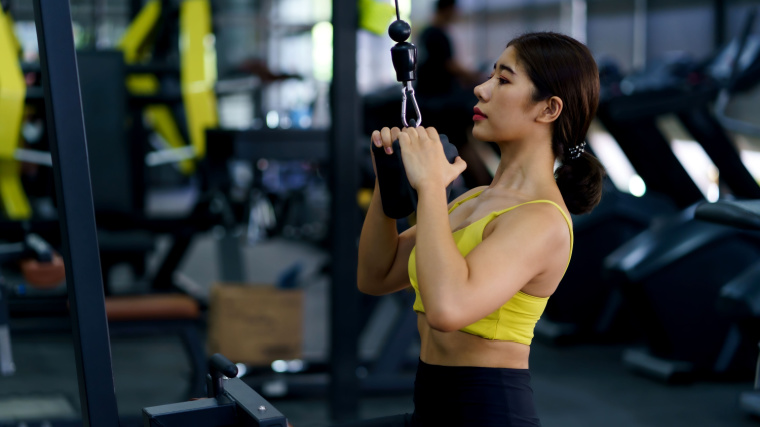
You may struggle to feel specific muscles of the back working when you’re still a beginner. If this is the case, try using eccentric control — intentionally slowing down the lowering phase of each repetition. A two to three-second lowering portion can really help here. This shouldn’t have a negative impact on your growth, but may help you learn to execute each exercise more effectively for the long-term. (5)
Single-Arm Dumbbell Row
- How to Do It: Grab a dumbbell and a bench to help support your posture. Rest one knee and one hand on the bench as a brace while the other hand holds the dumbbell. Stand on your free leg and brace on the bench with the opposite side of your body on the. Row the dumbbell toward your body until your elbow is near your ribs, before lowering back to a full stretch.
- Sets and Reps: 3 x 10-12 per arm
- Rest Time: No rest between arms. Rest two minutes between sets.
Half-Kneeling Single-Arm Cable Pulldown
- How to Do It: Attach a single handle to a high pulley on a cable pulldown station. Step into a reverse lunge, resting your rear knee comfortably on the floor. Holding the handle in the hand opposite your “forward” leg in the 90-degree lunge position. Brace your entire body and draw the cable toward the front of your shoulder. Control the weight and allow it to return to stretched position overhead without moving your feet. When you switch arms, switch your stance as well.
- Sets and Reps: 3 x 12-15 per arm
- Rest Time: No rest between arms. Rest 90 seconds between sets.
Chest-Supported T-Bar Row
- How to Do It: Take the wide handles on a chest-supported T-bar row station. Lean your upper body against the chest support and brace your legs on the platform. Draw the weight toward your body while keeping your elbows flared out at a comfortable angle. Don’t allow your elbows to “pinch” inward. Slowly lower the weights back to the starting position for a full stretch.
- Sets and Reps: 3 x 10-12
- Rest Time: Rest 90 seconds between sets.
Cable Reverse Flye
Jessie’s Girls Training Programs: Reverse Cable Flyes
- How to Do It: Set two cable pulleys slightly above shoulder-height. Grab the carabiners or a single handle each side of the cable, using opposite hands. Keep your arms mostly straight and take a small step backwards. Tuck your shoulder blades back and down, assume a stable stance, and brace your core. Draw your arms back, creating a “standing T” posture, before returning your arms in front to lower the weight.
- Sets and Reps: 3 x 12-15
- Rest Time: Rest 60 seconds between sets.
Single-Arm Face-Away Cable Curl
- How to Do It: Attach a single handle the lowed position of a cable pulley. Grab the handle and face away from the cable stack. Take a small step forward and keep the handle by your side — aim to feel a “pre-stretch” in your biceps muscle. Lean slightly forward at your waist and perform curls, flexing to the top and extending your arm into a full stretch at the bottom.
- Sets and Reps: 3 x 12-15
- Rest Time: No rest between arms. Rest 60 seconds between sets.
Muscles Trained in the Pull Workout
Your pulling routine will cover a ton of muscular real estate, with many exercises crossing over to train several muscles at once. Working your pull muscles will recruit your latissimus dorsi, trapezius, rhomboids, posterior deltoids, and biceps brachii — which is why this session would also be considered a back and biceps workout.
Latissimus Dorsi
The latissimus dorsi is of the largest muscles on your body. It is a big swath of muscle that spans most of your back and each side of your torso. Exercises that draw your arm from high to low and from front to back are going to be powered to, a huge degree, by your latissimus dorsi. This includes pulldowns and rows of all varieties but, particularly, variations that use an arm path close to your body (as opposed to extra-wide-grip rows), will be great here.
Trapezius
Your trapezius muscle is another relatively large, triangular-shaped muscle that spans from the back of your neck down toward your mid-back. Your trapezius is used in many different exercises because of how broadly it attaches to your body.
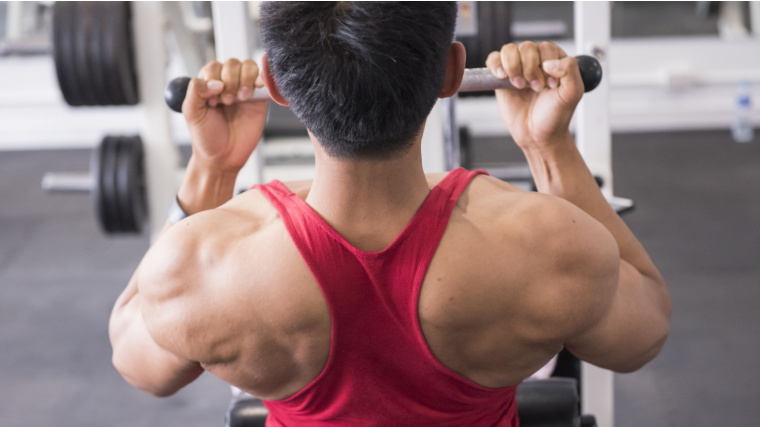
Most commonly, exercises that pull your arms back towards your body — especially with a flare-out elbow position and a double-overhand grip — will be best. Think about squeezing your shoulder blades together while using a double-overhand grip to better target the traps in any pulling exercise.
Rhomboids
Your rhomboids are a close neighbor of your traps and they will be smoked by many of the same types of pulling exercises. Movements that require you to protract and retract your shoulder blades (bringing them together and apart) will have a big carry over to building your rhomboids. Performing exercises from a slightly low-to-high arcing motion might also help you hit the rhomboids slightly better, such as upright row variations.
Posterior Deltoid
Much like your anterior deltoids are trained during the pushing workout, your posterior deltoids — on the backside of your shoulder — are heavily targeted during many pull routine exercises. Similar to you rhomboids and trapezius, most exercises that bring your arm backward, while using an overhand grip, can help build some well-developed posterior delts.
Keeping your shoulder blades locked in the same position during these movements will emphasize the posterior deltoids a bit more, because it will shift focus away from your trapezius and onto your rear delts.
Biceps Brachii
One of the benefits of a pulling workout is that your biceps brachii (those good ol’ biceps) get a double dose of love during pulling routine. Effectively, all of your back exercises will have some form of biceps involvement due to your arms connecting you to the weights. After some indirect work through the your entire session, it’s common to finish them off with a direct biceps exercise or two that really emphasize flexing your arm.
Inescapable Leg Day
For some, leg training can be a necessary evil. It can be a grueling day at the office, but a huge set of wheels is a prerequisite for bodybuilding and muscular legs complement any overall physique. Although barbell work can eventually be an asset here, building some quality muscle and slowly working it into place is likely a better plan for long-term results.
As a beginner, too much barbell work, too fast can be disproportionately fatiguing. In the long run, you’ll get more than your fair share of barbell training but, for now, ease in with machines and dumbbells.
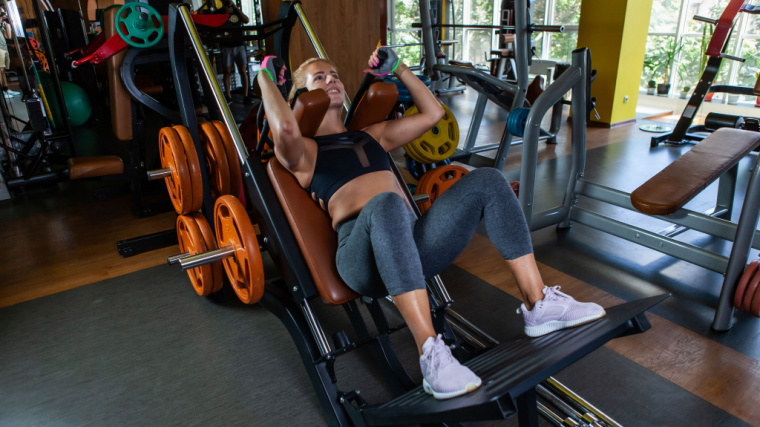
Your leg routine can be a great way to build full body strength in the long term as well. The goal will still be to safely perform each set to a high degree of difficulty (close to muscle failure). If you can, erring on the slightly heavier side of things can help with strength development development while still producing serious muscle gain. (2)
Hack Squat
- How to Do It: Step onto the hack squat machine, resting your entire back — from your hips to shoulders — flat against the pad. Set your shoulders snugly into the shoulder pads, and lay your head flat against the support. Use a comfortable foot stance with your feet pointed slightly out. Brace your entire body, unrack the weight, and bend your legs to lower yourself as deeply as comfortably possible. Stand up to return to the starting position.
- Sets and Reps: 3 x 8-10
- Rest Time: Rest two to three minutes between sets.
Dumbbell Romanian Deadlift
- How to Do It: Grab a pair of dumbbells and stand with them comfortably alongside your body. Take a hip-width foot and slightly bend your knees. Brace your entire body and squeeze the dumbbells tight. Slowly slide your hips back while keeping your knees in the same position and keeping your back nearly straight. Keep shifting your hips back until you feel a slight stretch across your glutes and hamstrings before standing up.
- Sets and Reps: 3 x 8-10
- Rest Time: Rest two minutes between sets.
Glute Bridge
- How to Do It: Lie flat on your back with your feet flat on the ground and your knees bent to roughly 90-degrees. Place a dumbbell comfortably across your lap and support each end of the weight with your hands to secure it in place. Brace your core and extend your hips by driving through your feet and flexing your glutes. When your hips are raised to form a nearly straight line from your knees to your chest, hold a strong squeeze for one second before lowering yourself back to the starting position.
- Sets and Reps: 3 x 12-15
- Rest Time: Rest 60 seconds between sets.
Leg Extension
- How to Do It: Sit on the leg extension machine, adjusting the seat so that the back of your knees rest comfortably against the pad. The ankle roller should also sit comfortably at the natural curve between your foot and shin. Grab the side handles for support before flexing your quadriceps to extend your knees. Squeeze in the top position for a solid second before slowly lowering your legs back to the starting position.
- Sets and Reps: 3 x 12
- Rest Time: Rest 90 seconds between sets.
Lying Hamstring Curl
- How to Do It: Lie face down on the machine, placing your hips comfortably at the natural crease on the machine padding. The ankle roller should be adjusted to sit a few inches above your heels. Grab the handles and brace your core before squeezing your hamstrings to draw your feet toward your butt. Slowly lower your legs to a full stretch and repeat.
- Sets and Reps: 3 x 12-15
- Rest Time: Rest 60 seconds between sets.
Muscles Trained in the Leg Workout
This leg workout will target the major muscle groups of the lower body. While your calves and inner thighs also could be trained directly, they should get some good initial growth from this routine as-is. The main targets will be the quadriceps, gluteals, and hamstrings.
Quadriceps
The quadriceps are the big muscles that compose the front of your thighs. There are four distinct muscles that make up the same “muscle group” but they all contribute to straightening or extending your leg. Hitting a good squat pattern and knee/leg extension are the meat and potatoes of quadriceps training.
Gluteals
The gluteals, or “glutes,” are your butt. They are actually one of the biggest muscles on your body and they contribute to many powerful exercises. Squats, deadlifts, and Olympic lifting are all very glute-dominant movements. Basically, anything that extends your hip requires your glutes to perform.
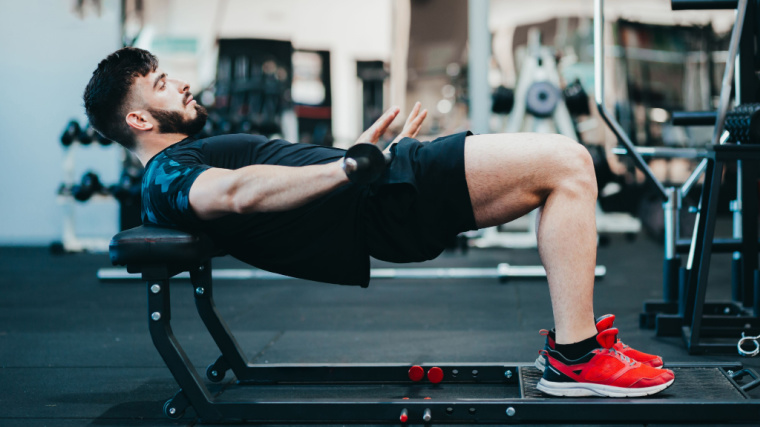
Although big movements moving potentially heavy weights can be key to developing big glutes, relatively smaller movement patterns like a basic glute bridge can help build up some much sought after muscle mass, too.
Hamstrings
The hamstrings are the beefy back portion of your legs. They are made up of three large muscle “bellies,” but they generally perform knee flexion (curling) and hip extension (straightening). This means that your hinge-based movements like Romanian deadlifts and hamstring curls will hit them quite hard throughout your lower body routines.
How To Warm-Up for Stronger, Safer Training
Warming up for a bodybuilding routine can be as simple as hitting some lighter weight, higher repetition sets of your first exercise. Depending on your needs, it could also be a lightweight circuit that helps mobilize and stabilize your joints for the task at hand. Regardless, if you’re looking for a straightforward, general, and effective approach to warming up for your bodybuilding routine, try these.
Upper Body — Push and Pull Day
Warming up your upper body will be very centered upon your shoulders. Most issues arise from a lack of mobility or stability around the shoulders and it can negatively impact both your push and pull days.
As a general rule, a solid amount of band pull-aparts, face pulls, and single-arm bottoms-up kettlebell presses can prepare you for a hard day at the upper body office. If you feel particularly stiff on a given day, you can also throw in some pec or lat stretches first.
Pectoralis Minor Shoulder Stretch to Combat Sitting
Lower Body
Your lower body warm-up will be all about hip mobility and stability. This gives you the leeway to use certain unweighted exercises such as lunges, split squats, or single-leg Romanian deadlifts to help prepare.
You can also get a good general warm-up from most cardio equipment. A moderate-incline power walk or, better yet, a few rounds on an air bike can be just the trick when you want to think less and work more. If you struggle with core positioning, a few planks can set you straight.
Get Gaining
The beginner stage of bodybuilding is a wonderful time. Your body is literally adapting to training as quickly as it ever will. This can be extremely motivating, but it can also be easy for an overzealous trainee to leave gaps in long-term development. Using this push/pull/legs split can be just the ticket. Its frequency will help you grow some serious muscle while also giving you the programming flexibility to leave no muscle-building stone unturned. Get started today, begin gaining some quality muscle, and build the foundation that will serve you far down the line.
References
- Grgic, J., Schoenfeld, B. J., & Latella, C. (2019). Resistance training frequency and skeletal muscle hypertrophy: A review of available evidence. Journal of science and medicine in sport, 22(3), 361–370. https://doi.org/10.1016/j.jsams.2018.09.223
- Schoenfeld, B. J., Grgic, J., Ogborn, D., & Krieger, J. W. (2017). Strength and Hypertrophy Adaptations Between Low- vs. High-Load Resistance Training: A Systematic Review and Meta-analysis. Journal of strength and conditioning research, 31(12), 3508–3523. https://doi.org/10.1519/JSC.0000000000002200
- Zabaleta-Korta, A; Fernández-Peña, E; Santos-Concejero, J. (2020) Regional Hypertrophy, the Inhomogeneous Muscle Growth: A Systematic Review. Strength and Conditioning Journal 42(5):p 94-101, DOI: 10.1519/SSC.0000000000000574
- Chaves, S. F. N., Rocha-JÚnior, V. A., EncarnaÇÃo, I. G. A., Martins-Costa, H. C., Freitas, E. D. S., Coelho, D. B., Franco, F. S. C., Loenneke, J. P., Bottaro, M., & Ferreira-JÚnior, J. B. (2020). Effects of Horizontal and Incline Bench Press on Neuromuscular Adaptations in Untrained Young Men. International journal of exercise science, 13(6), 859–872.
- Bernárdez-Vázquez, R., Raya-González, J., Castillo, D., & Beato, M. (2022). Resistance Training Variables for Optimization of Muscle Hypertrophy: An Umbrella Review. Frontiers in sports and active living, 4, 949021. https://doi.org/10.3389/fspor.2022.949021
Featured Image: Nomad_Soul / Shutterstock
